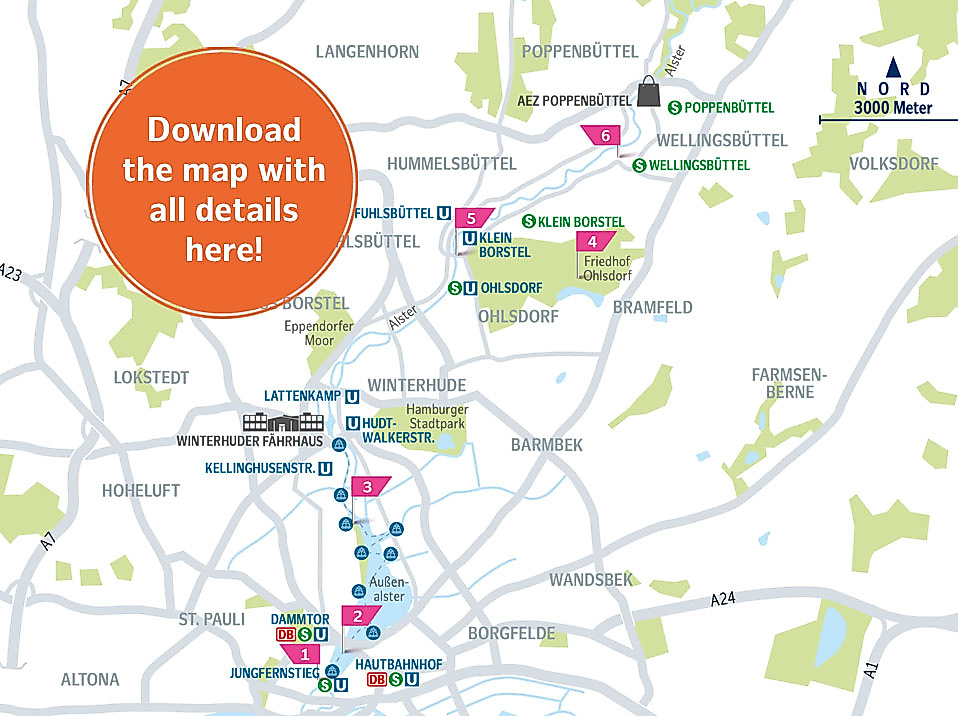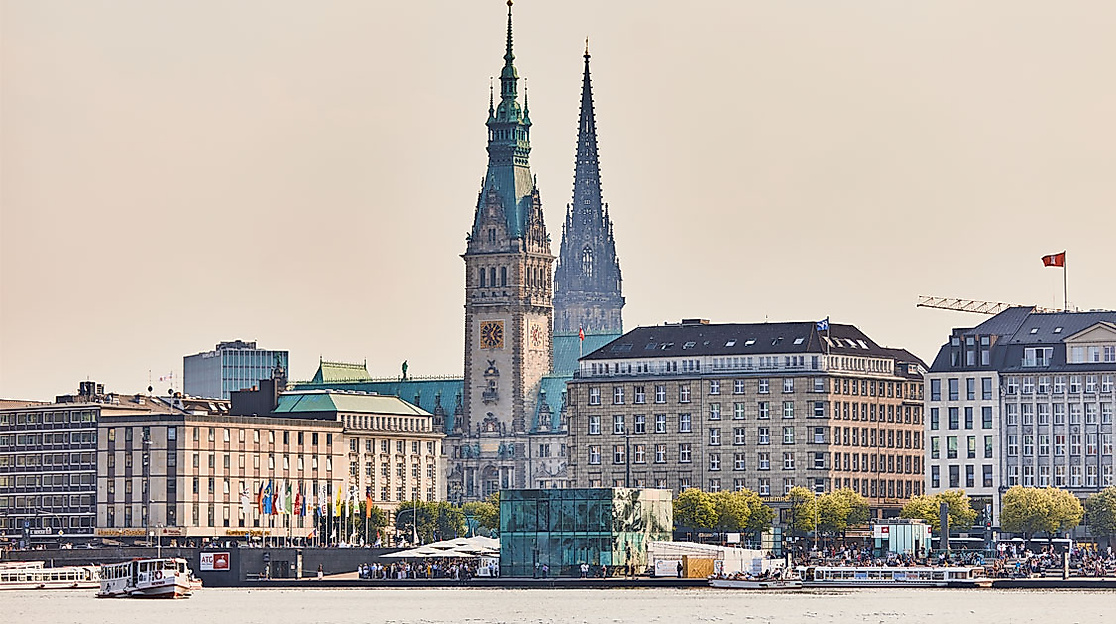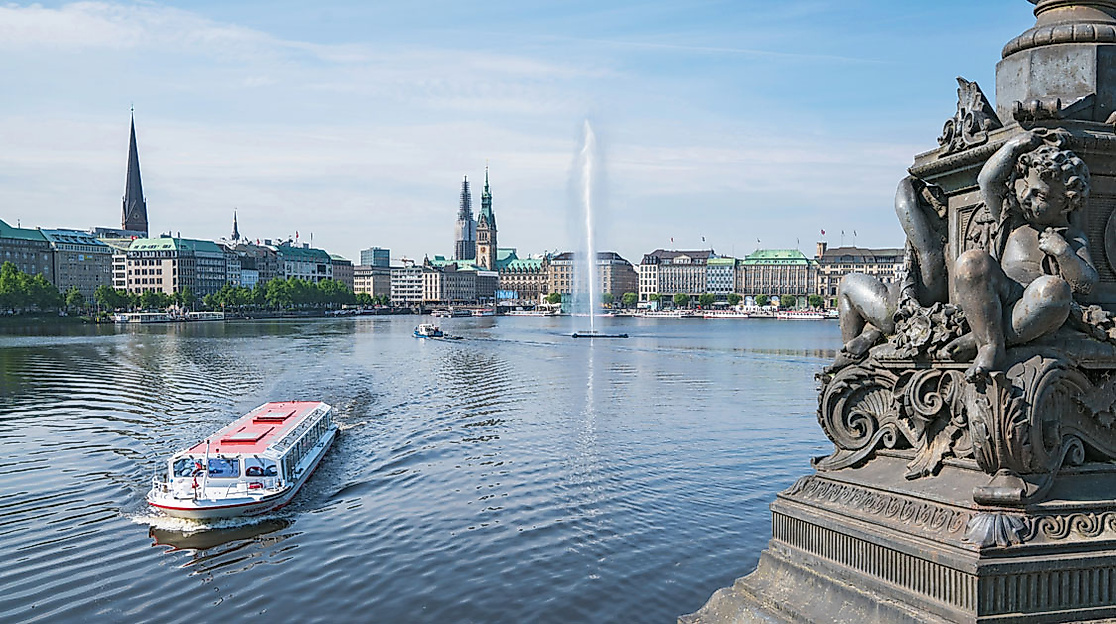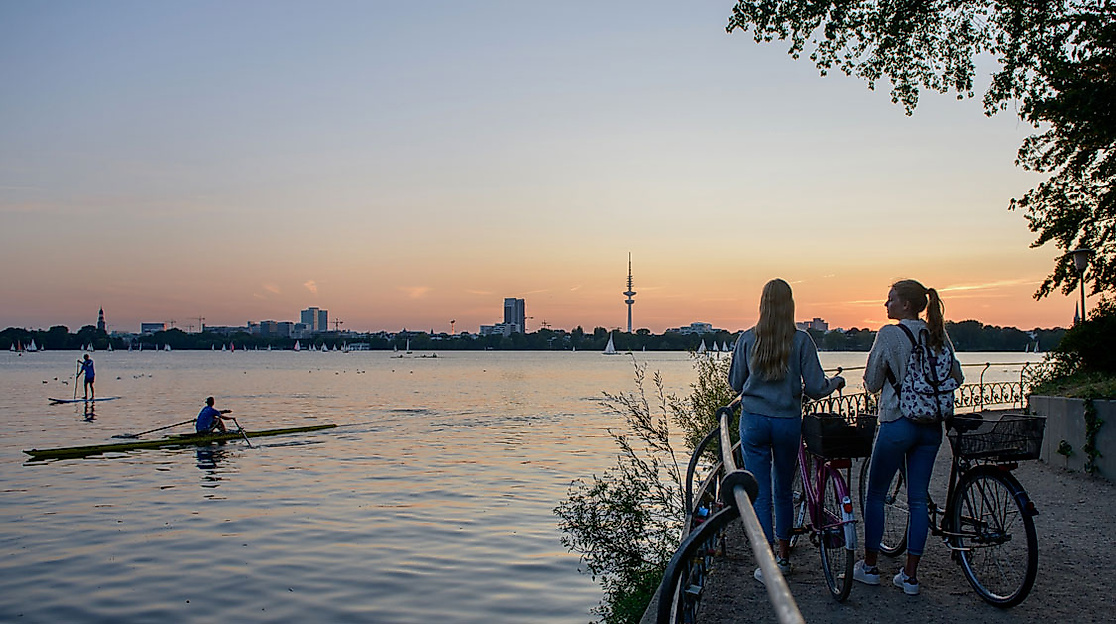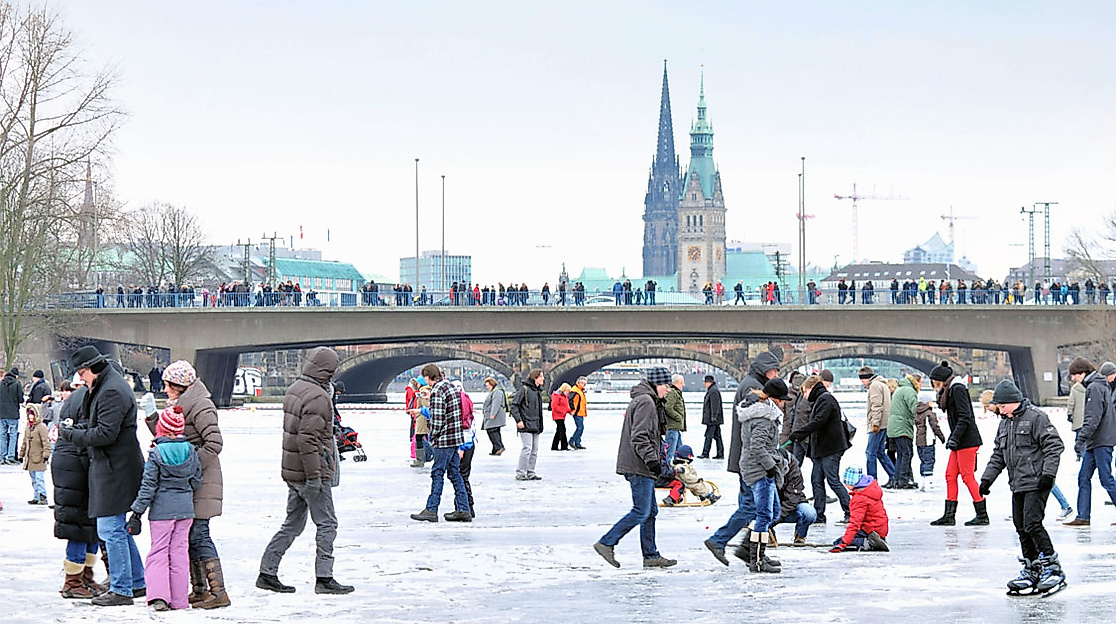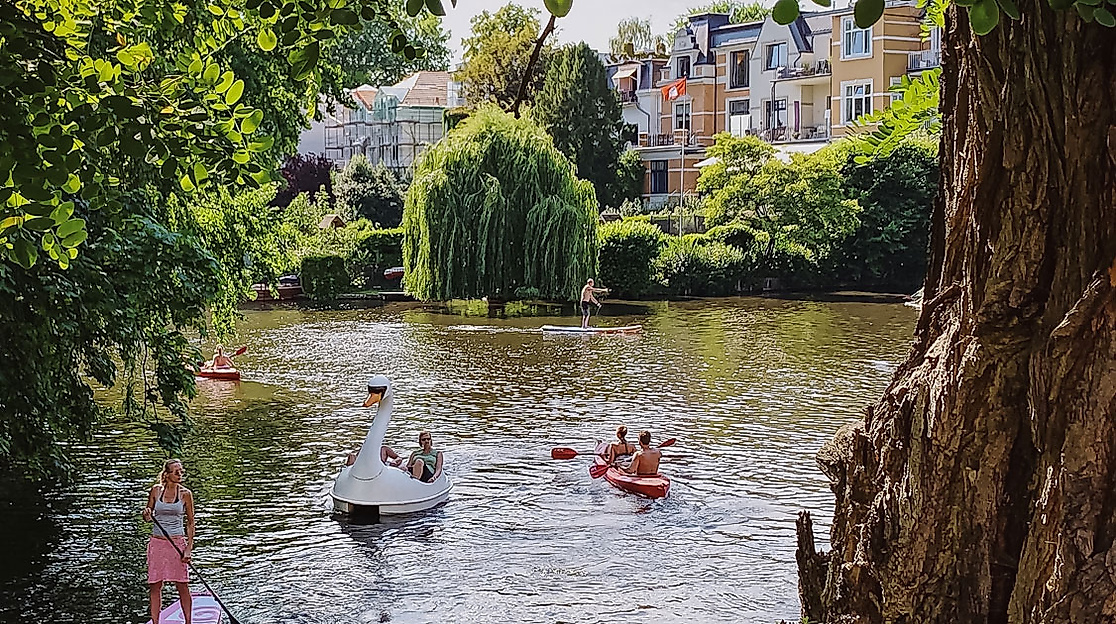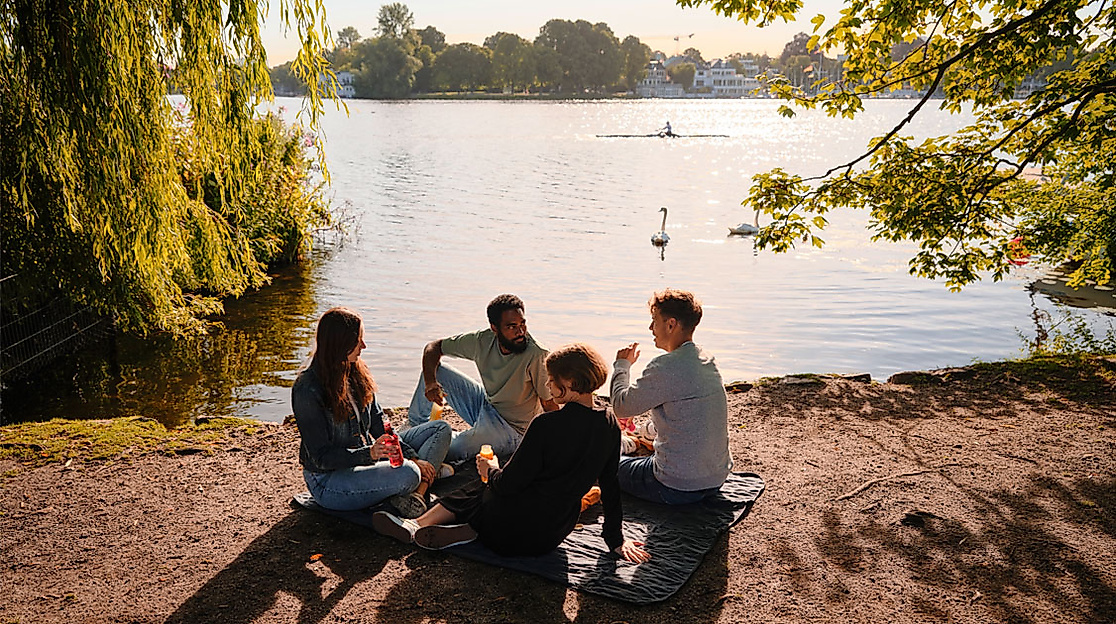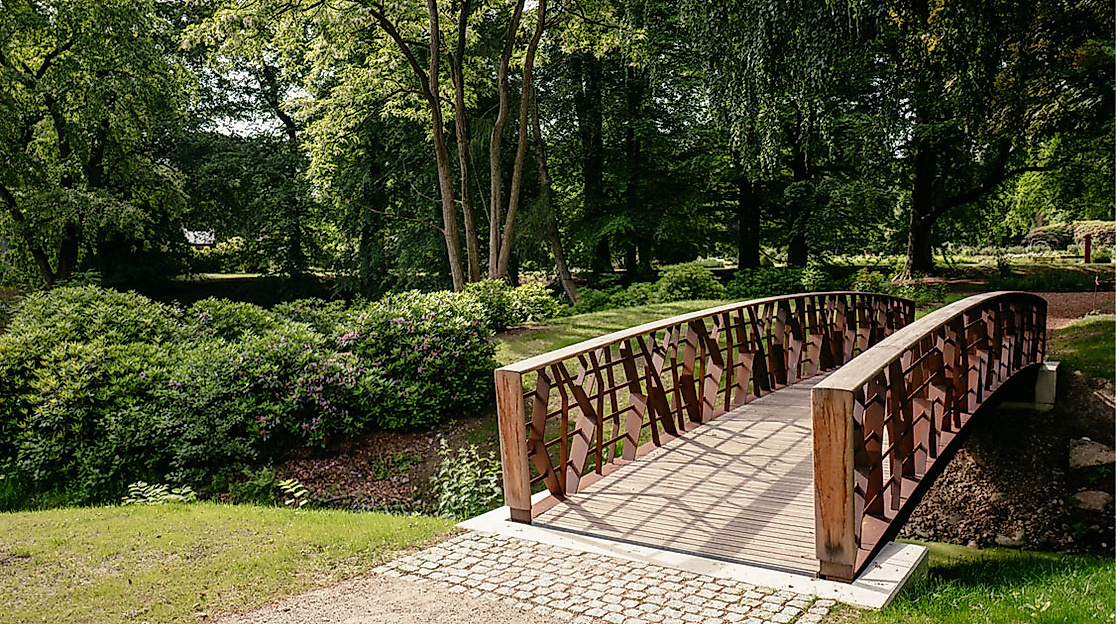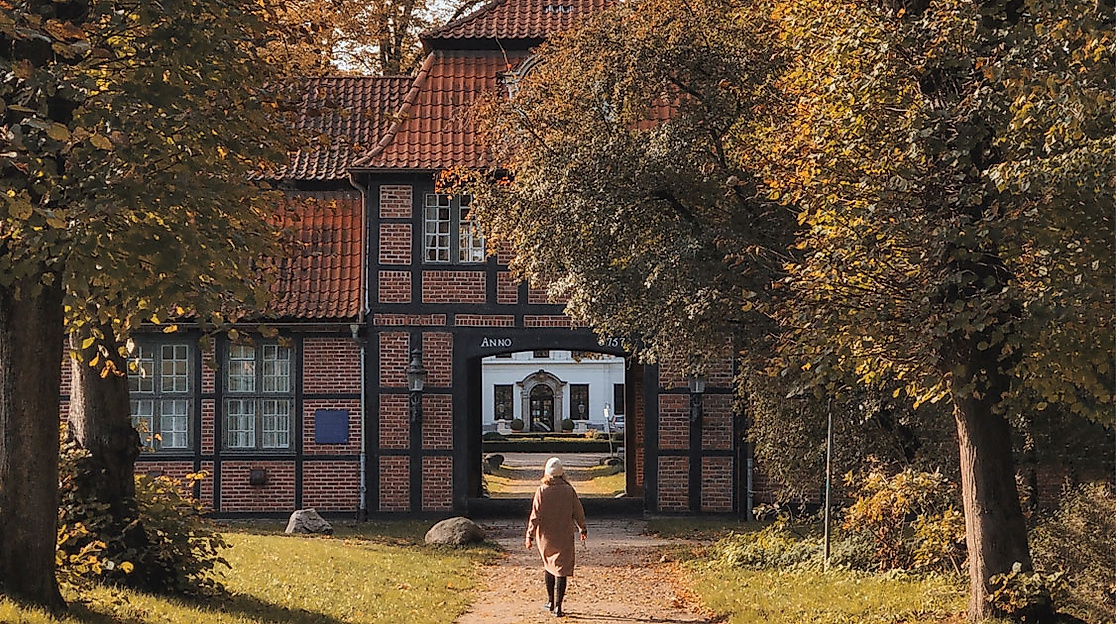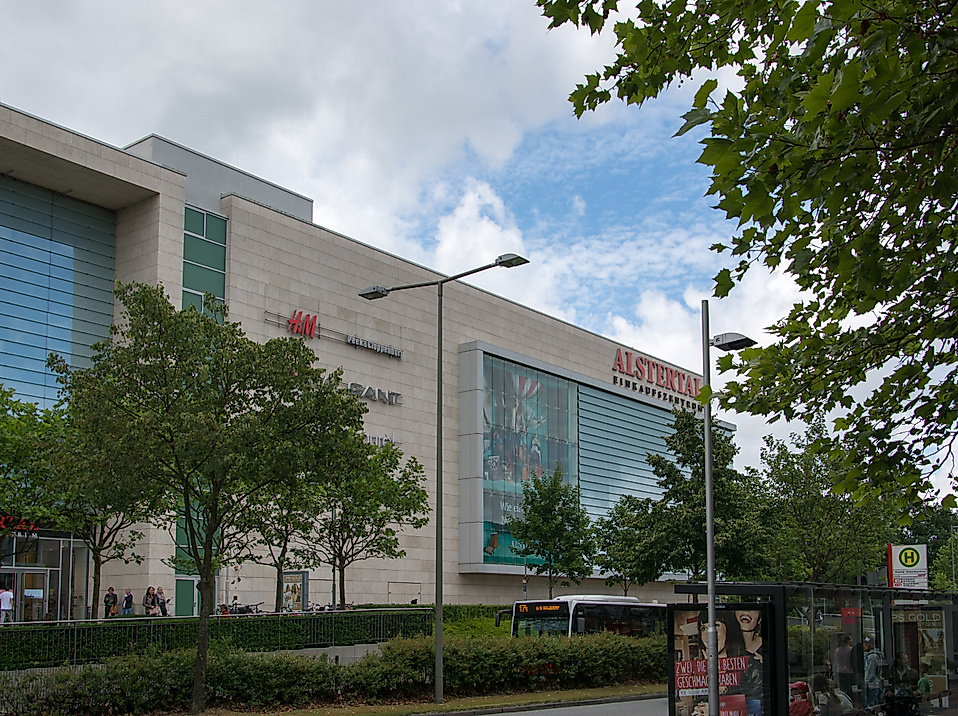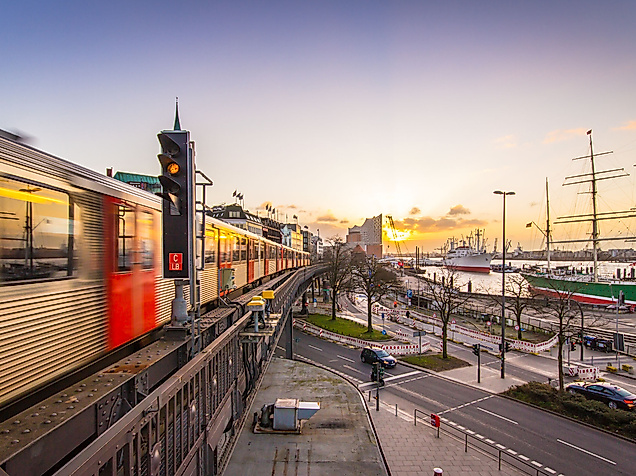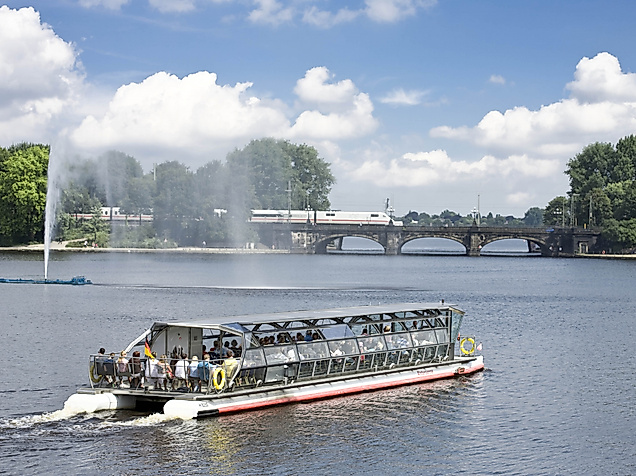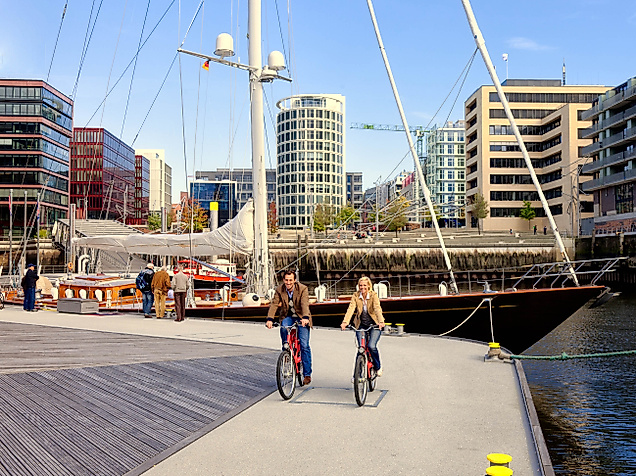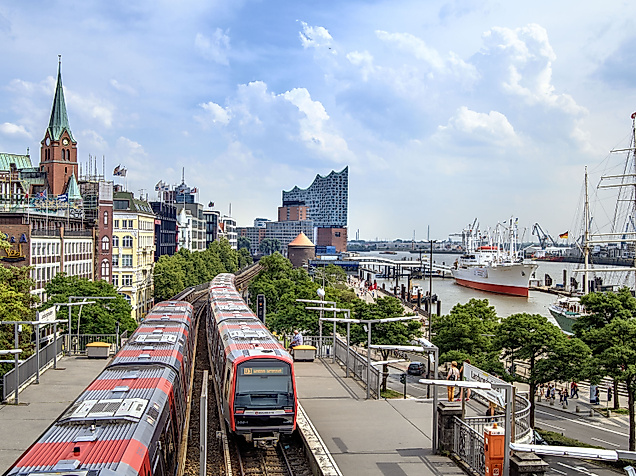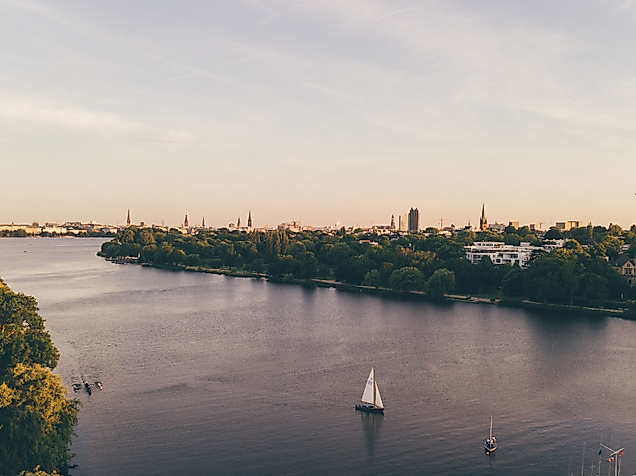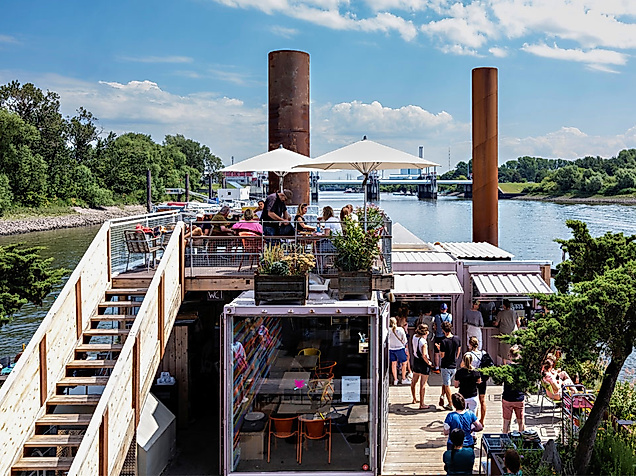After your 4 km hike through Alsterdorf, you will arrive in Ohlsdorf. Here you can truly immerse yourself in nature. If you like, take a detour to Ohlsdorf Cemetery – with 400 hectares of land it is Hamburg’s biggest green space and the largest park cemetery in the world. A walk through this treasured natural environment is certainly well worth it.
From here, you still have about 7 km to walk before you arrive in Poppenbüttel. You will first pass the Fuhlsbüttel lock. Ever since it was last reconstructed, it no longer serves as a lock, but as a weir to regulate the water level. A fish ladder enables fish to passage over via small basins staggered opposite each other. As you walk further, you will spot more of such facilities that help fish migrate. Finally, the canalised part of the Alster comes to an end and the environment turns more pristine and untamed.
The lush forest vegetation and a fantastic interplay of natural colours will make you forget you are still in Hamburg. After another stretch of just under 5 km, you will reach the historic Wellingsbüttler Torhaus. Built in 1757, this beautiful half-timbered house is a popular venue for cultural events. As you take a little detour to Wellingsbüttel, you will find that the path is quite hilly by Hamburg standards – that’s because this landscape was formed by terminal moraines. And thus you will get your fair share of exercise as you continue your journey upwards towards Poppenbüttel.
From Poppenbüttel S-Bahn station, you can now take the S1 straight back into Hamburg’s city centre. Along the route, you have several opportunities to get back to the city centre using the U-Bahn (U1) or the S-Bahn (S1).
As a route planner, we strive to put together particularly diverse routes through Hamburg's most beautiful areas. Did you like our Alster route? We look forward to receiving your feedback. To discover even more unique corners of Hamburg, take a look at our city map.

